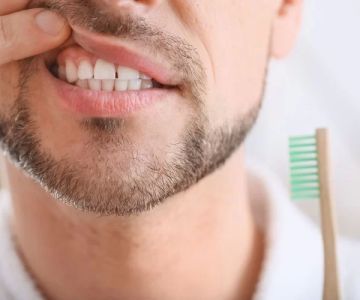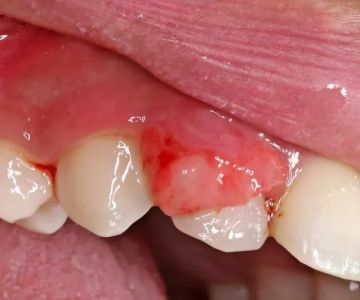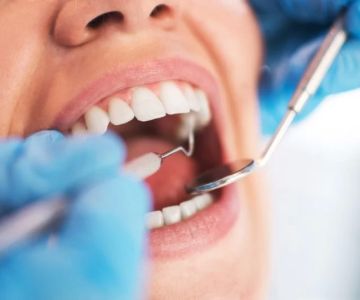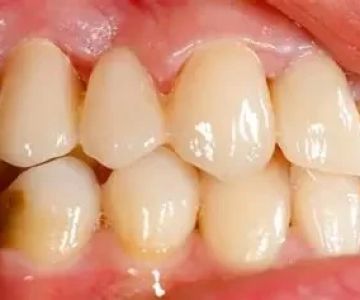
1. Understanding Oral Diseases: More Than Just a Toothache
1.1 Why Oral Health Is Critical to Your General Well-Being
Oral diseases encompass a wide range of conditions that affect the teeth, gums, tongue, and other structures of the mouth. In the United States, these issues are not only common but also often underestimated in their severity. Poor oral health can lead to systemic problems such as heart disease, diabetes complications, and respiratory infections.
According to the CDC, over 40% of adults experience oral pain annually, and millions live with untreated dental conditions. Oral diseases are not just cosmetic or minor annoyances—they are serious health concerns that deserve prompt attention.
2. Common Types of Oral Diseases
2.1 Dental Caries (Tooth Decay)
Tooth decay, also known as dental caries or cavities, is caused by the breakdown of tooth enamel by acid-producing bacteria. It’s one of the most prevalent oral diseases, especially in children and older adults. Left untreated, decay can lead to severe pain, abscesses, and tooth loss.
Sugary diets, inadequate brushing, and infrequent dental visits all contribute to cavity development. Early symptoms include sensitivity to sweets or cold, and visible pits or discoloration on teeth.
2.2 Periodontal Disease (Gum Disease)
Gum disease starts as gingivitis—characterized by red, swollen gums that bleed easily. If not treated, it can progress into periodontitis, a more serious form that damages the soft tissue and bone supporting the teeth.
Periodontal disease is a leading cause of tooth loss in adults and is linked to heart conditions and poor diabetes control. Warning signs include bad breath, receding gums, and loose teeth.
2.3 Oral Thrush (Candidiasis)
Caused by an overgrowth of the Candida fungus, oral thrush is more common in immunocompromised individuals, people using inhaled steroids, or those on antibiotics. It appears as white patches on the tongue and cheeks and may cause discomfort or a burning sensation.
2.4 Oral Cancer
Oral cancer affects thousands in the U.S. every year and includes cancers of the lips, tongue, cheeks, and throat. Risk factors include tobacco use, heavy alcohol consumption, and HPV infection.
Early signs include persistent mouth sores, unexplained bleeding, or lumps in the mouth or neck. Early detection dramatically improves survival rates, making routine dental screenings essential.
2.5 Herpes Simplex Virus (HSV-1)
Cold sores or fever blisters caused by HSV-1 are contagious oral lesions that often recur. While generally not dangerous, they can be painful and socially uncomfortable. Stress, illness, and sunlight are common triggers.
3. Causes and Risk Factors for Oral Diseases
3.1 Poor Oral Hygiene
Neglecting brushing and flossing leads to plaque accumulation, which harbors bacteria responsible for decay and gum disease. Inconsistent oral care also weakens the immune response within the oral cavity, making infections more likely.
3.2 Diet and Nutrition
Diets high in sugars and starches fuel bacteria that erode tooth enamel. A lack of essential nutrients like calcium and vitamin C can weaken both teeth and gums, contributing to the development of oral issues.
3.3 Smoking and Alcohol Use
Tobacco reduces blood flow to gum tissues and hinders healing, while alcohol can dry out the mouth and increase oral cancer risks. These substances often work synergistically to worsen oral conditions.
3.4 Genetics and Medical Conditions
Some people are genetically predisposed to gum disease, while others may experience dental problems due to conditions like diabetes, HIV/AIDS, or hormonal changes. Medications can also contribute by causing dry mouth or altering oral flora.
4. Real-Life Case: Susan’s Wake-Up Call
4.1 From Gum Bleeding to Emergency Treatment
Susan, a 45-year-old from Denver, noticed bleeding gums for months but dismissed it as stress. One morning, she woke with intense jaw pain and swelling. An emergency visit revealed advanced periodontitis and a dental abscess threatening to spread infection to her bloodstream.
With urgent care and a follow-up treatment plan from a periodontal specialist, she recovered—but not without a painful lesson on the importance of proactive dental health.
5. Diagnosing and Treating Oral Diseases
5.1 Early Detection Through Regular Dental Exams
Most oral diseases are preventable or manageable when caught early. Dentists use tools like x-rays, probing instruments, and visual inspections to assess gum depth, enamel integrity, and soft tissue health.
5.2 Non-Surgical and Surgical Interventions
Early decay may be treated with fluoride varnishes or fillings. More severe cases require root canals, periodontal cleanings, or surgical procedures like gum grafting or tooth extraction. Oral cancers require biopsies, radiation, or chemotherapy depending on the stage.
5.3 Restorative and Cosmetic Treatments
Once an oral disease is under control, patients may seek crowns, implants, or dentures to restore function and appearance. These treatments not only enhance aesthetics but also improve chewing, speech, and self-esteem.
6. Preventing Oral Diseases with Lifestyle Choices
6.1 Brushing and Flossing Techniques
Use a soft-bristled toothbrush twice a day, along with daily flossing. Angle the brush at 45 degrees to the gums and gently clean each tooth. For extra protection, consider mouthwash containing antimicrobial ingredients.
6.2 Dental Visits and Screenings
Schedule professional cleanings and check-ups at least twice a year. Early detection can prevent minor issues from becoming major health problems. Your dentist can also offer sealants, fluoride treatments, and personalized care plans.
6.3 Managing Underlying Conditions
For patients with diabetes, managing blood sugar levels is critical to preventing oral complications. Addressing dry mouth, acid reflux, and vitamin deficiencies also contributes to improved oral and systemic health.
7. How Family Dentistry Online Supports Your Oral Health Journey
At Family Dentistry Online, we specialize in helping patients across the U.S. prevent, detect, and manage oral diseases. Whether you’re concerned about gum sensitivity or need advanced restorative care, our trusted providers are committed to your long-term well-being.
Oral diseases are more than surface-level problems—they're windows into your overall health. Taking control of your dental care today could protect your future tomorrow.







 Personal Touch Dentistry: Wilma F. Antonio, DDS4.0 (234 review)
Personal Touch Dentistry: Wilma F. Antonio, DDS4.0 (234 review) Bensalem Dental Specialties Center3.0 (162 review)
Bensalem Dental Specialties Center3.0 (162 review) Charm Dental Group3.0 (14 review)
Charm Dental Group3.0 (14 review) Cavity Detective Pediatric Dentistry5.0 (81 review)
Cavity Detective Pediatric Dentistry5.0 (81 review) Divine Dentistry4.0 (434 review)
Divine Dentistry4.0 (434 review) Westside Pediatric Dental and Orthodontic Group: Michael L. Kleinman, DDS5.0 (89 review)
Westside Pediatric Dental and Orthodontic Group: Michael L. Kleinman, DDS5.0 (89 review) The Importance of Oral Health Education During Pregnancy for a Healthy Pregnancy
The Importance of Oral Health Education During Pregnancy for a Healthy Pregnancy Best Tips for Brushing Your Teeth Properly for Healthy Gums: Essential Techniques for Oral Health
Best Tips for Brushing Your Teeth Properly for Healthy Gums: Essential Techniques for Oral Health Why Skipping Dental Checkups Can Lead to Bigger Oral Health Problems
Why Skipping Dental Checkups Can Lead to Bigger Oral Health Problems Advantages of Porcelain Dental Restorations
Advantages of Porcelain Dental Restorations How Can Diabetes Cause Tooth and Gum Problems? Preventing and Managing Oral Health Issues
How Can Diabetes Cause Tooth and Gum Problems? Preventing and Managing Oral Health Issues Healthy Habits for Promoting Good Oral Health and Hygiene: Tips for a Healthy Smile
Healthy Habits for Promoting Good Oral Health and Hygiene: Tips for a Healthy Smile